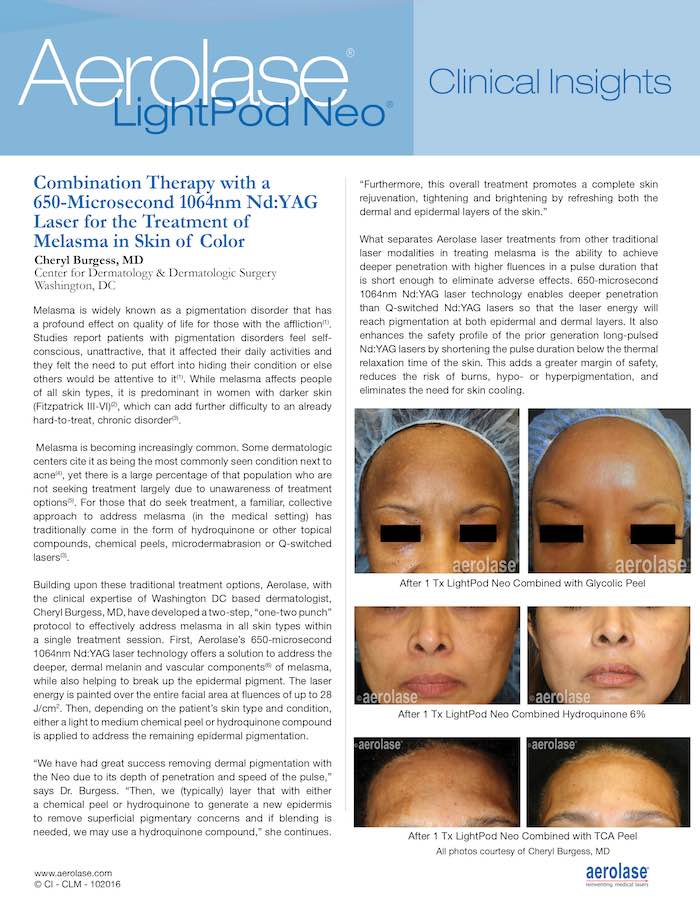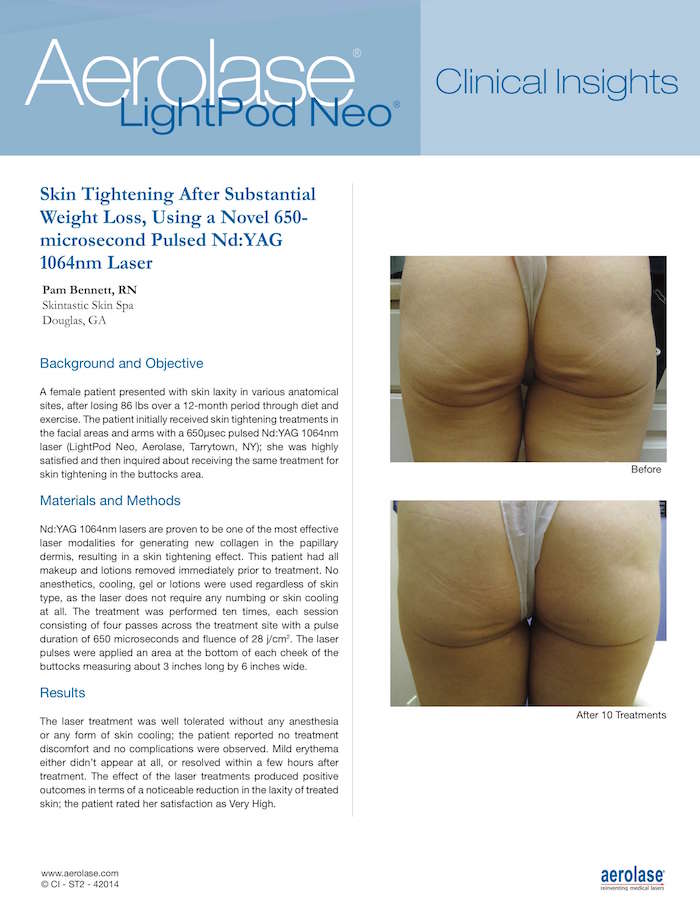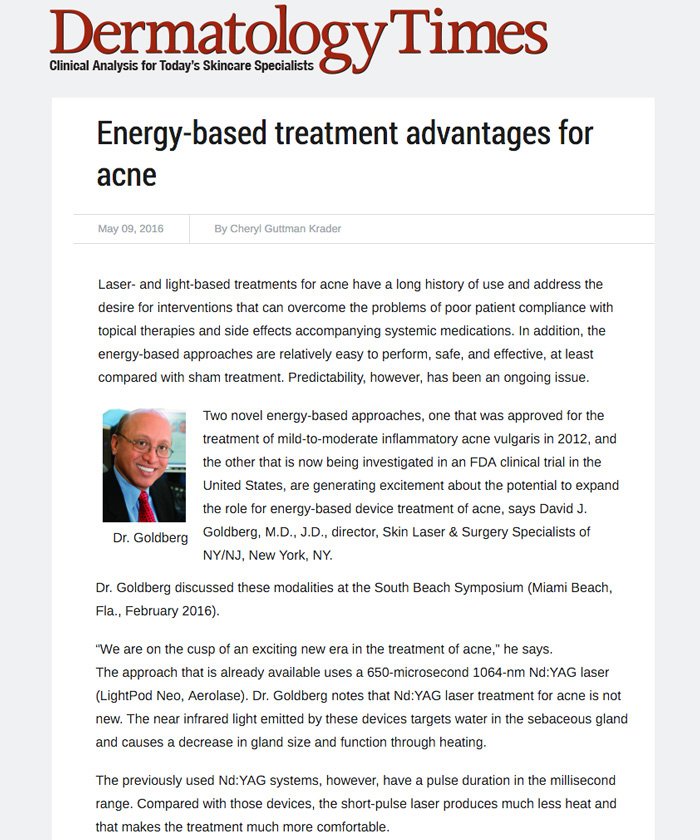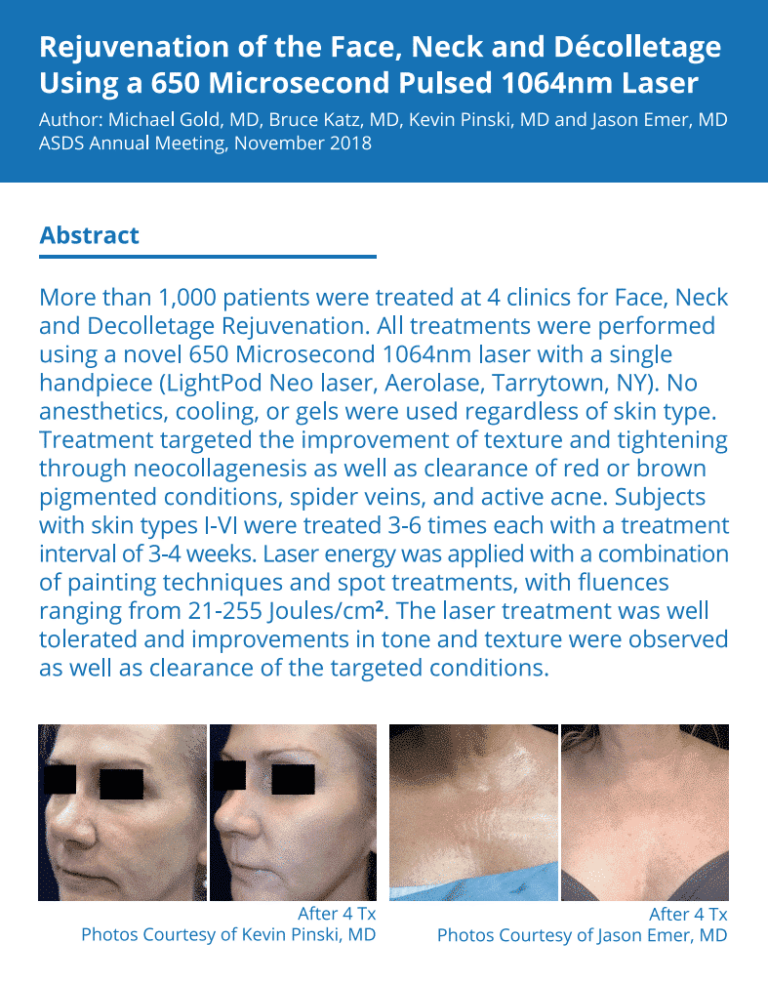Cheryl Burgess, MD, Center for Dermatology & Dermatologic Surgery Washington, DC
Melasma is widely known as a pigmentation disorder that has a profound effect on quality of life for those with the affliction(1). Studies report patients with pigmentation disorders feel self-conscious, unattractive, that it affected their daily activities and they felt the need to put effort into hiding their condition or else others would be attentive to it(1). While melasma affects people of all skin types, it is predominant in women with darker skin (Fitzpatrick III-VI)(2), which can add further difficulty to an already hard-to-treat, chronic disorder(3).
Melasma is becoming increasingly common. Some dermatologic centers cite it as being the most commonly seen condition next to acne(4), yet there is a large percentage of that population who are not seeking treatment largely due to unawareness of treatment options(5). For those that do seek treatment, a familiar, collective approach to address melasma (in the medical setting) has traditionally come in the form of hydroquinone or other topical compounds, chemical peels, microdermabrasion or Q-switched lasers(3).
Building upon these traditional treatment options, Aerolase, with the clinical expertise of Washington DC based dermatologist, Cheryl Burgess, MD, have developed a two-step, “one-two punch” protocol to effectively address melasma in all skin types within a single treatment session. First, Aerolase’s 650-microsecond 1064nm Nd:YAG laser technology offers a solution to address the deeper, dermal melanin and vascular components(6) of melasma, while also helping to break up the epidermal pigment. The laser energy is painted over the entire facial area at fluences of up to 28 J/cm2. Then, depending on the patient’s skin type and condition, either a light to medium chemical peel or hydroquinone compound is applied to address the remaining epidermal pigmentation.
“We have had great success removing dermal pigmentation with the Neo due to its depth of penetration and speed of the pulse,” says Dr. Burgess. “Then, we (typically) layer that with either a chemical peel or hydroquinone to generate a new epidermis to remove superficial pigmentary concerns and if blending is needed, we may use a hydroquinone compound,” she continues.




